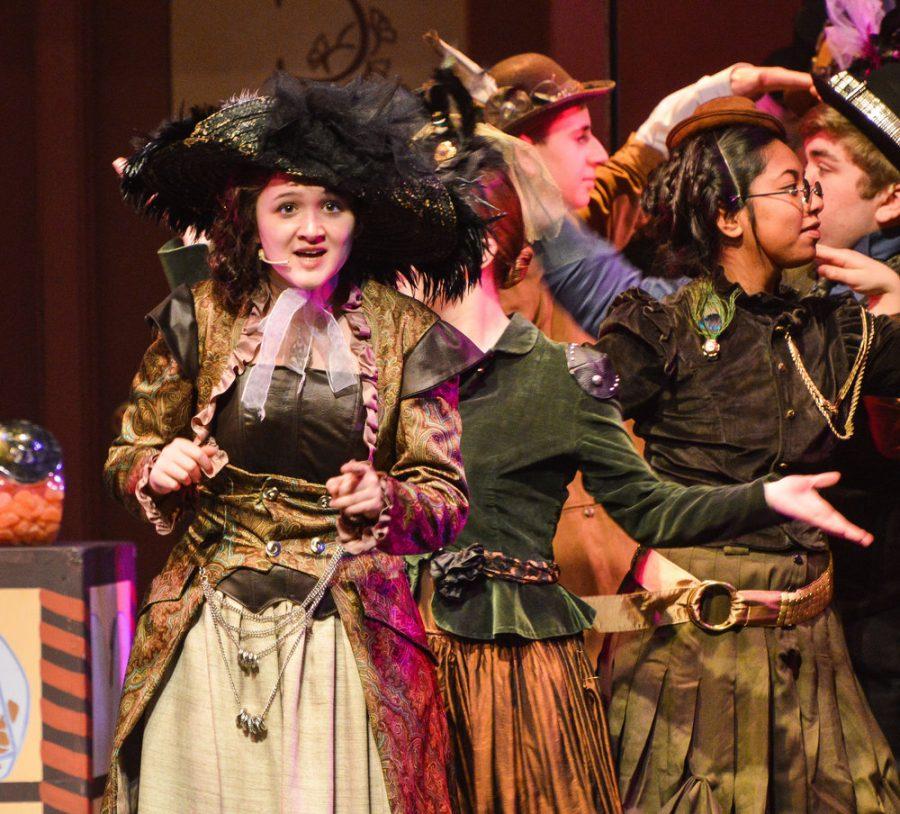Steampunk mixes Victorian fashion, science fiction and cosplay culture
Photo courtesy of Catherine Mckenzie.
Appleton North’s 2015 show “Mary Poppins” used a steampunk theme for much of the costume design.
March 23, 2017
Steampunk is defined as being a subgenre of science or science fantasy that heavily revolves around technology and aesthetic designs.
The genre was inspired by 19th century industrial steam-powered machinery, with works often set in an alternative of the 19th century Victorian era, American ‘wild West’ or even a post-apocalyptic future during which steam-powered machinery has become the norm. An example of steampunk in pop culture would be Mad Max: Fury Road and the TV show Supernatural.
While to some it may merely be a genre, to others, steampunk is a way of life. People young and old pay tribute to the culture by wearing protruding metallic goggles, leather corsets and accessories featuring gears.
Fans often gather at conventions, or cons, to duel, discuss any advancements in the community (new books featuring the genre, etc) and other steampunk-related activities. They often make their own costumes with unique touches and designs.
“People come in looking for gears and stuff for their cosplays,” says Skye Iwanski, who works at Michael’s, a store that sells craft-making supplies.
“I love the mix between futuristic and old,” Jaicie Wilson, a senior at Appleton North, stated when asked what she enjoyed about the culture. “It’s really unique.”
Indeed, steampunk is a creative blend of mid-nineteenth, twentieth and twenty-first century machinery.
While the exact origin of the culture is unknown, it rose to fame somewhere in the early 1960’s. Since then, steampunk has grown largely in popularity. Many television shows such as Dr. Who and movies such as Alice in Wonderland have steampunk themes. Shockingly, however, there has been a slight decrease of the appearance of steampunk in theatre.
“Theatre isn’t a big fan of steampunk,” says Sophie Plzak, a costume designer for the Appleton North theatre’s costume department. Perhaps it is the complexity of the genre’s designs, or the complexity of the genre itself.
The thing that you need to know the most about steampunk, according to Jaicie Wilson, is that “there are actually many different types of ‘punks,’ I guess you could say: Dieselpunk and Cyberpunk to name two. Steampunk is a really different style and is a commitment if you want to make something. It’s so much fun!”



